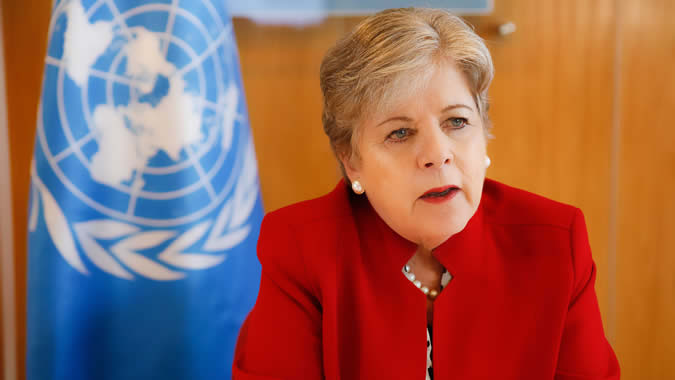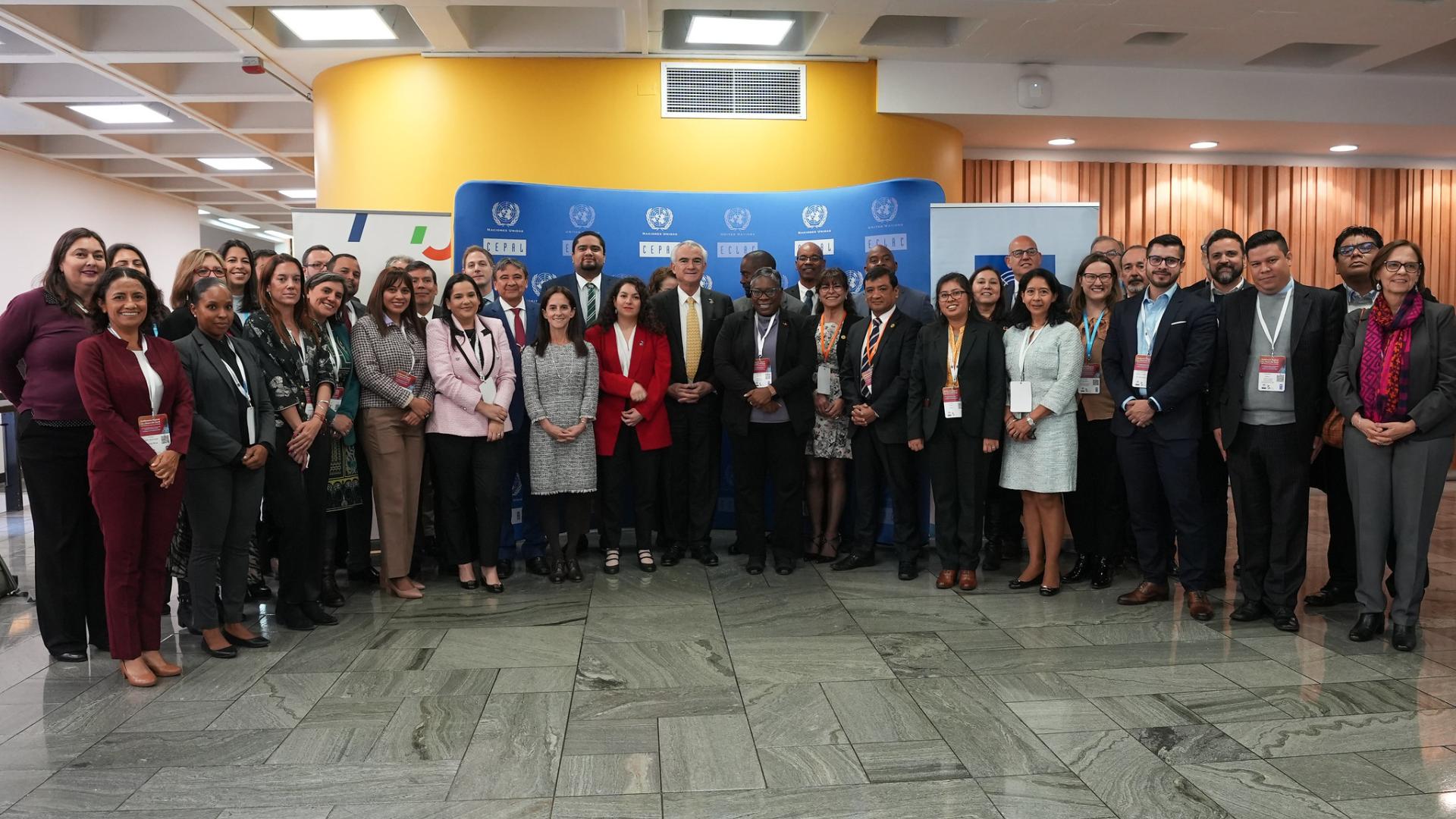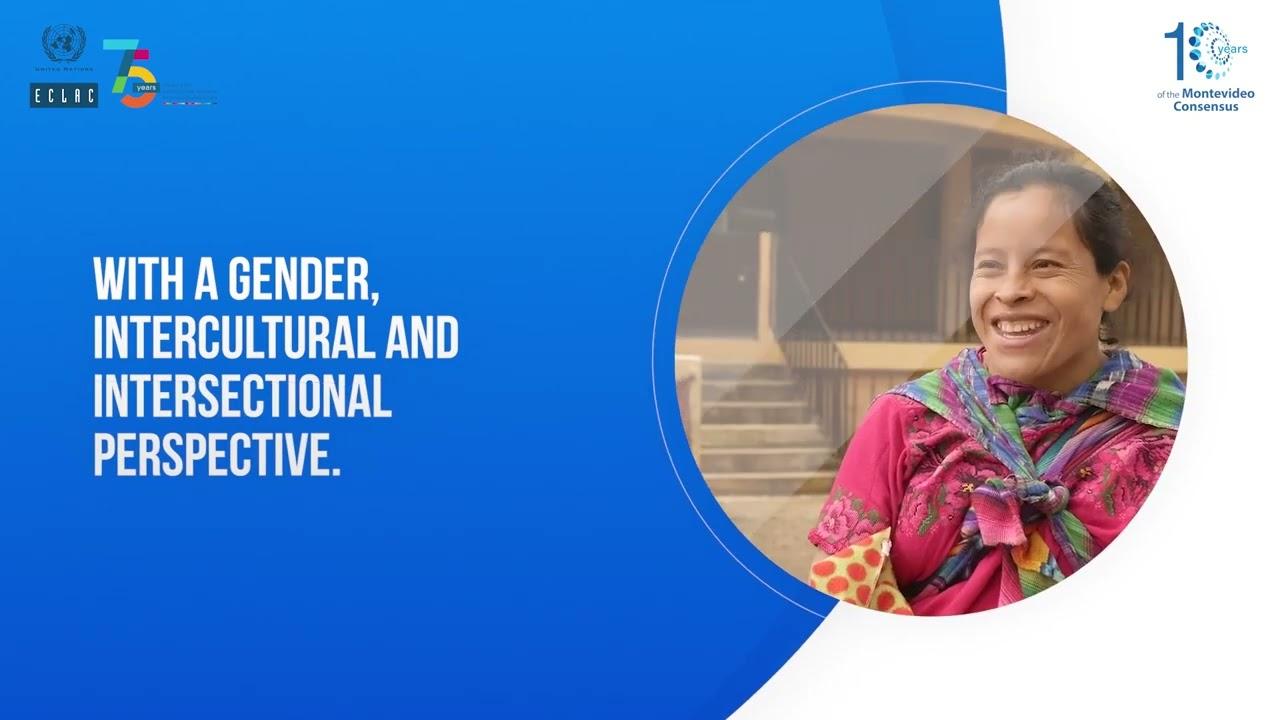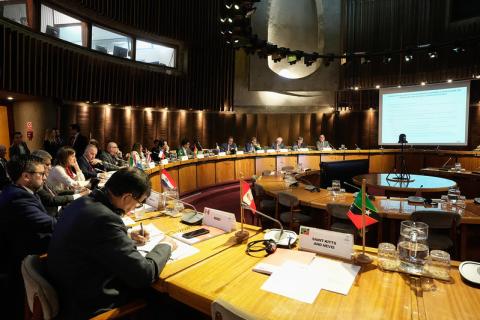Briefing note
Alicia Bárcena, Executive Secretary of the Economic Commission for Latin America and the Caribbean (ECLAC), reiterated today her call to use greater regional integration and cooperation to confront the deep asymmetries observed between developed and developing countries in terms of the “response capacity of macroeconomic, productive, social and health policies” amid the crisis, during the 36th Ordinary Assembly of the Latin American and Caribbean Parliament (Parlatino), which is permanently headquartered in Panama.
Latin America and the Caribbean was the developing region most affected by the COVID-19 crisis and it will be the slowest to recover, Bárcena explained in a keynote lecture that she delivered virtually, entitled “Outlook for Latin America and the Caribbean in light of the COVID-19 pandemic.”
Advanced economies – which have maintained fiscal stimulus, taking advantage of favorable financing conditions – are the only ones seen resuming the growth trajectory foreseen before the pandemic in 2022. Emerging economies, including those in the region, will not do so until 2025, she said. “Between January and September 2021, advanced countries announced new measures of around $2.5 trillion dollars versus $330 billion in emerging markets,” she indicated.
“The structural problems that have limited Latin America and the Caribbean’s economic growth for decades, including low levels of investment and productivity, have intensified as a result of the pandemic and will limit the recovery of the region’s economic activity, beyond the rebound of 2021,” she stated.
The region’s Gross Domestic Product (GDP) expanded by 6.2% in 2021, driven mainly by consumption, in addition to exports and gross fixed capital formation (particularly associated with extractive industries). This represents an “ephemeral euphoria,” Bárcena noted, since a slowdown in growth is expected for 2022 (2.1%), which she described as very worrisome.
With regard to investment as a proportion of GDP in the region, she indicated that it represented just 19.5% in 2021, a significantly lower percentage than the global average (26.8%). “The fiscal policy challenge in the coming years is to maintain pro-growth public spending in a context of fiscal sustainability,” she said, warning that “the increase in interest payments in recent years has reduced space for other priority expenditures."
In that regard, Bárcena posed the need to increase tax collection levels and improve the tax structure, as well as to prioritize investment in strategic sectors such as environmental, digital, transportation and care-related sectors, fostering employment and gender equality. “Public spending must be guided by a strategic vision,” she stressed, adding that “public investment must be harnessed to attract private investment (crowding-in) and to orient fiscal incentives towards renewable energy, decarbonization, digital inclusion, and research and development.”
“The region is facing a less favorable external context and a strong deceleration of growth, less fiscal space, inflationary pressures and foreign exchange volatility,” Bárcena summarized, reiterating that the economic “recovery” of 2021 has not been enough to mitigate the pandemic’s social and labor effects, which have been particularly acute for women.
As a result of the prolonged COVID-19 health and social crisis, the extreme poverty rate in Latin America is seen having risen from 13.1% of the population in 2020 to 13.8% in 2021, representing a setback of 27 years, while it is estimated that the overall poverty rate fell slightly, from 33.0% to 32.1% of the population, according to ECLAC’s report Social Panorama of Latin America 2021.
“Inequality also increased between 2019 and 2020, ending the downward trend that had been seen since 2002. This is compounded by a silent crisis in education, with problems of continuity, learning gaps and 3.1 million students at risk of dropping out, which makes a safe return to in-person classes imperative,” she declared.
In order to control the pandemic, Bárcena called on the region’s countries to implement the Plan for Self-Sufficiency in Health Matters approved by the Community of Latin American and Caribbean States (CELAC) and prepared by ECLAC. “The challenge continues to be implementing massive vaccination plans and strengthening the primary health care system,” in a context in which 26 of the region’s 33 countries have not yet vaccinated 70% of their total population, she said.
“The pandemic is a historic opportunity for a new social compact that would provide protection, certainty and trust. Inequality conspires against recovery and against well-being,” Bárcena emphasized, adding that “the role of the State has been essential and must continue to be so in order to implement coordinated fiscal, monetary, social and environmental policies.”
In this context, she said, “participation and access to information strengthen trust in the State’s decisions.”
Bárcena also urged for revitalizing multilateralism, including the construction of a new international financial architecture that would support policy spaces and investment in developing countries, along with integration and cooperation among Latin American and Caribbean countries through regional mechanisms, such as CELAC, and subregional ones, such as SICA, the Pacific Alliance and MERCOSUR.
In Latin America and the Caribbean, intraregional trade has never accounted for more than 21% of total exports and in 2020, it represented 12%, the lowest level on record since the mid-1980s, she noted.
The region’s countries need recovery plans based on investment, employment and environmental sustainability and to make progress on building a care society, she concluded.



